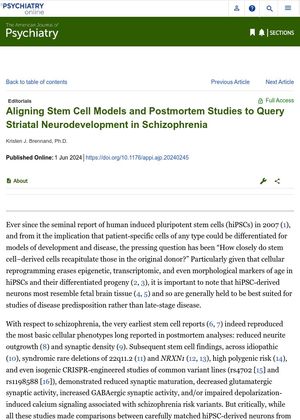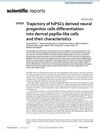Aligning Stem Cell Models and Postmortem Studies to Query Striatal Neurodevelopment in Schizophrenia
June 2024
in “
The American journal of psychiatry
”

TLDR Schizophrenia risk genes may affect early brain development, contributing to the disease.
Sawada et al. created a model using human induced pluripotent stem cell (hiPSC)-derived neurons and donor-matched postmortem brain tissue to study striatal neurodevelopment in schizophrenia. They used ventral forebrain organoids (VFOs) and found that schizophrenia-derived neurons showed accelerated differentiation and unique transcriptomic signatures, with 575 differentially expressed genes in progenitors and 144 in neurons. This suggests that schizophrenia risk genes may influence early striatal development, contributing to the disease. The study underscores the importance of postmortem analyses and the potential of hiPSC models to replicate disease-relevant characteristics.

